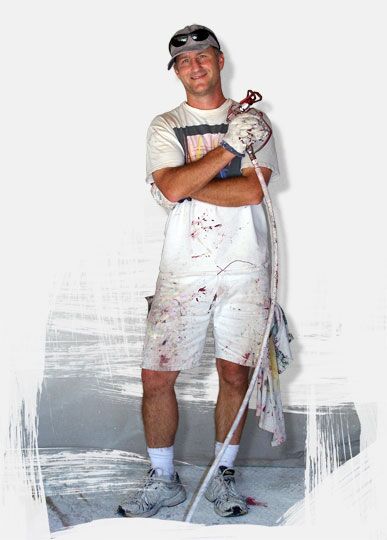Time required:
- 10-15 minutes
Equipment list:
- Paint brush. If I had to choose one paint brush for the rest of my life, it would be a Purdy 3-inch Angular Trim Brush.
- For trim painting, a 2.5-inch Purdy brush is another good option, just slightly smaller.
- 1-gallon bucket
- Wire brush
- Brush comb
- Brush spinner (optional)
Materials:
- Water
- Elbow grease :)
Thoroughly cleaning your paint brush when you're done with a paint job is important. If you invest in good quality brushes and you want them to last for years, follow these instructions and watch the video.
Instructions
First, before you can clean a paint brush you need to have a paint brush, and I recommend the Purdy 3-inch Angular Trim Brush as a great general purpose brush. It's large enough to hold a lot of paint, it's stable when cutting lines (edging), and it's capable of doing precise trim work if only the tips of the bristles are employed. If you are primarily painting trim, then a 2.5-inch Purdy brush is another great option. It's a little bit smaller but still holds a good amount of paint.
Note that if you are in the middle of a paint job, you do not need to clean your brush every night. See my video Storing Your Brushes and Rollers Overnight for tips on how to keep brushes and rollers working well until you are done with the job. Once you are done with the job, and you have poured any remaining paint into the paint bucket and put the lid on, take the cutting pot and brush to a sink for cleaning. Follow these steps:
- The first step is to run water into the 1-gallon bucket (cutting pot) and use the brush to clean the paint off the edges of the pot. Do this for several minutes. You won't get all the paint off, but you'll get the excess off so the pot can dry and be used again in a day or so.
- After the pot is a little clean, start running water into the bucket and pushing the bristles down into the corners of the bucket to get the paint out of the base of the bristles. Push down hard and bend the bristles some, but be a little gentle and don't bend them at a 90-degree angle. You don't want to damage them. (I haven't found that this process damages bristles on high quality brushes, only on the cheapies).
- Take the wire brush and vigorously brush the gooped up paint off the base of the bristles, all the way around the brush. Try to get it all off, but don't worry if there is a tiny amount of reside on the outside of a few bristles that won't come off no matter how hard you brush. Especially over the course of a few jobs, this residue might build a little, but it's not a problem as long as it's on the outside of the bristles and not in the base of the brush.
- When you're done wire brushing, give the bucket one final rinse and set it upside-down on a rag to dry.
- Now start running water straight down into the bristles. When the bristles get full of water, grab the bristles and squeeze them to wring out the water and any pigment/paint still in the base of the bristles. This is the crux of the whole brush-cleaning process. You need to keep doing this until the water running down the handle of the brush is clear when you squeeze. Keep at it for five or ten minutes until that water is clear or your brush will be ruined (or on its way to being ruined).
- Once the water runs clear down the handle, spin the water out of the brush by either using a conventional brush spinner or holding the brush between the palms of your hands and moving them back and forth in opposite directions to spin the brush. Do this until water stops flying out.
- Now take the brush comb and comb out the bristles to make sure they are straight.
- Put the brush back into its cardboard sleeve if you still have it, and hang it in the garage from a nail with the bristles pointing down.
- Remember to clean out the sink to preserve matrimonial harmony in your house.





